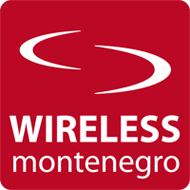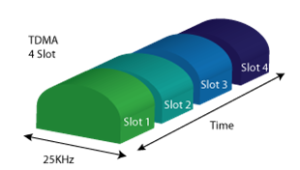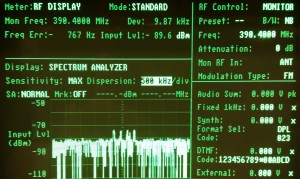The European Telecommunication Standards Institute (ETSI) created the first real open standard for European users of PMR (professional mobile radio) called TETRA.
The name TETRA was initially an abbreviation (Trans European Trunked Radio) which was later on renamed into TErrestrial Trunked RAdio
TETRA is present in over 117 countries in all continents. This fact confirms that there is practically no alternative to TETRA in meeting the communication needs of users in the field of security.
Compared to analogue systems, where we had one frequency serving for communication in a group of users, in TETRA we have, on the technology side, TDM (Time Division Multiplexing – time multiplex with four channels per holder), which means that we have four different groups of users sharing a single frequency.
Unlike the analogue, TETRA digital radio system provides better signal propagation, higher resistance to interference, integration of transmission of different types of information, and possibility of having efficient crypto protection.
Instead of having each user operating in its limited network, the intention is to build professional radio networks as large national systems where the infrastructure is used by multiple users, as the case is in Montenegro. Each user operates normally in its user group, and if and when required, dispatcher connects several groups into one common group thus allowing them to work together.
TETRA system was developed for professional users requiring the following options:
- Instantaneous call set-up (in less than one second),
- Communication point – several points: group calls, as well as ordinary calls,
- Direct communication between terminals, without “mediation” of infrastructure,
- Emergency calls, with automatic microphone switching on,
- Individual and telephone calls
Characteristics of the TETRA system include quality communications at higher speeds, even under the conditions of poor signal reception and in noisy environments, high quality of reception per cell with size even up to 60 km at 400MHz and fast call set-up (typically 0.2 s). Individual and group calls are set-up much faster compared to GSM (typically 10 s) and analogue trunking radio-systems.
The system also offers high-quality security features with the option to select among the encryption methods (encryption may be used for voice, data, signalling and user identity) and efficient use of radio spectrum supported by direct mode communication, when one or more radio stations may communicate directly without using the network and its infrastructure (DMO).
Radio spectrum allocated to TETRA systems may be divided into three groups:
- Public security units: 380÷400 MHz;
- Commercial use: 410÷430 MHz and 450÷470 MHz;
- Other potential bands: 870÷876 MHz and 915÷921 MHz
Image of TETRA base station MTS 4 spectrum recorded by using Spectrum Analyzer
Given the increasing security challenges in the modern world, the scope of communication needs of the police, army, ER units, fire fighting units, search and rescue units and others exceed the possibilities offered by conventional analogue radio networks.
For decades in the past analogue systems were most frequently used with low level of information security protection. Unlike those, TETRA ensures maximum data protection level. In certain cases, individual units even relied on commercial services, without any guarantee that it will be able to establish link in the event of any major incident or disaster at all. Furthermore, the analogue systems used also had technological limitations.


